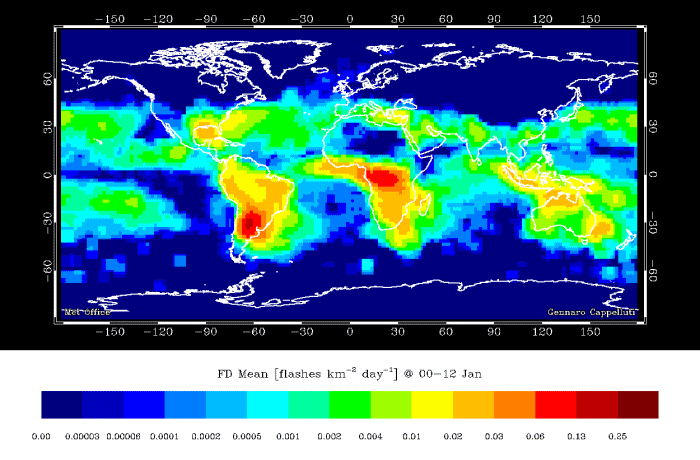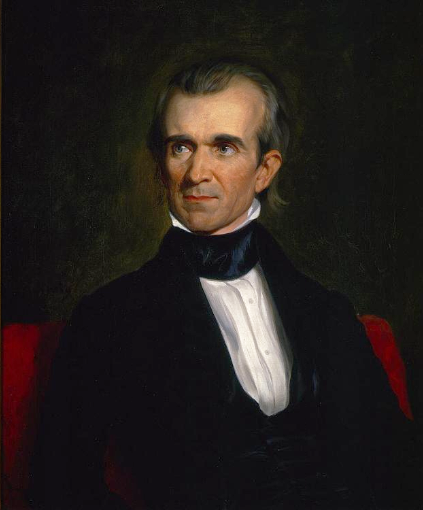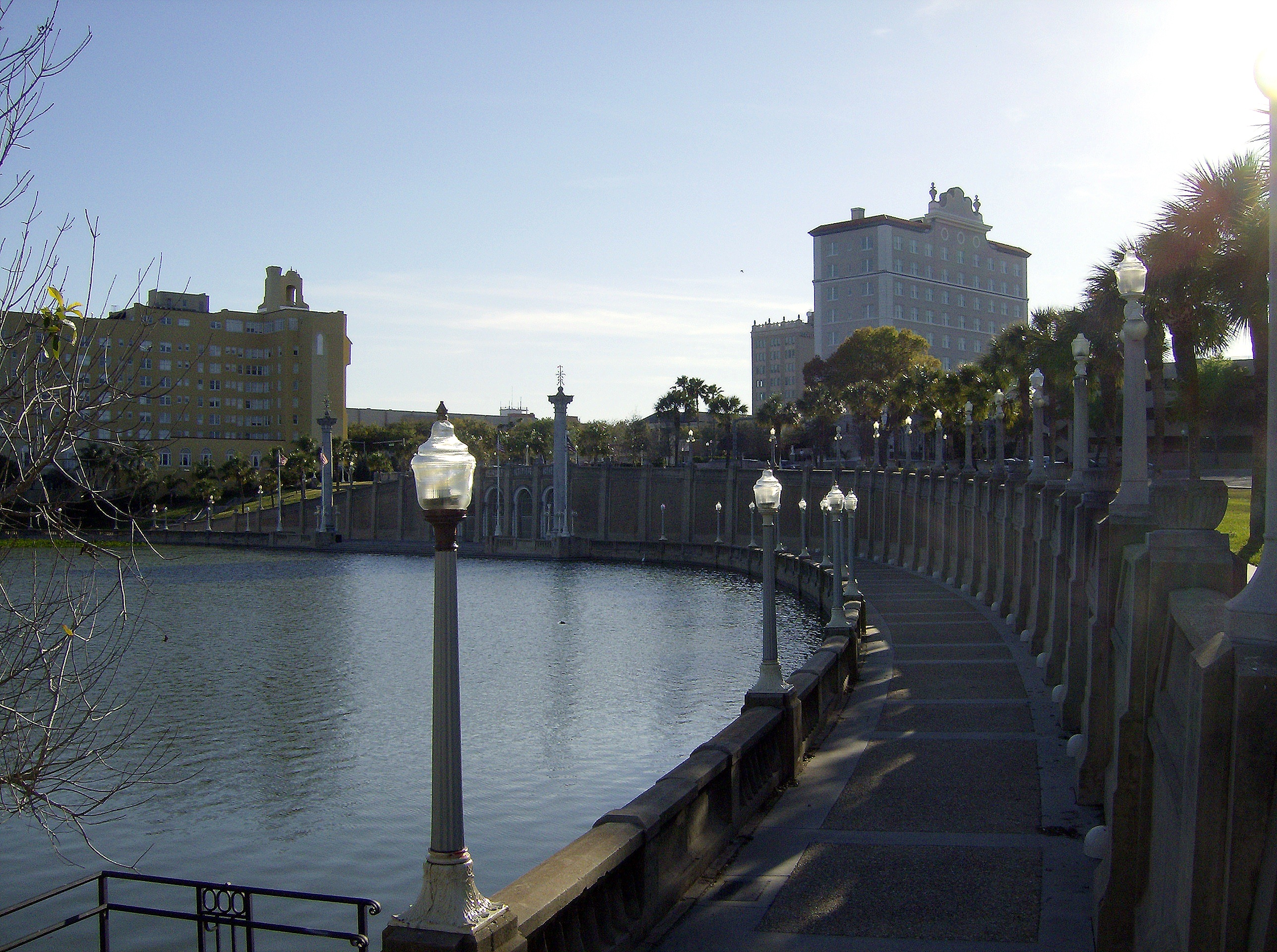|
Bartow, Florida
Bartow ( ) is the county seat of Polk County, Florida, United States. Founded in 1851 as Fort Blount, the city was renamed in honor of Francis S. Bartow, the first brigade commander of the Confederate Army to die in combat during the American Civil War. According to the 2010 Census, the city had a population of 17,298 and an estimated population of 20,147 in 2019. It is part of the Lakeland− Winter Haven Metropolitan Statistical Area, which had an estimated population of 584,383 in 2009. As of 2020, the mayor of Bartow is Scott Sjoblom. Located near the source of the Peace River, Bartow is approximately east of Tampa, Florida and southwest of the Greater Orlando area. The city is near the center of "Lightning Alley" and has frequent afternoon thunderstorms in the summer, but typically has sunny and mild winters. Government, mining, and agriculture are the major sectors of the area's economy. The primary roads in the Bartow area are U.S. Route 17, U.S. Route 98 and State ... [...More Info...] [...Related Items...] OR: [Wikipedia] [Google] [Baidu] |
City
A city is a human settlement of notable size.Goodall, B. (1987) ''The Penguin Dictionary of Human Geography''. London: Penguin.Kuper, A. and Kuper, J., eds (1996) ''The Social Science Encyclopedia''. 2nd edition. London: Routledge. It can be defined as a permanent and densely settled place with administratively defined boundaries whose members work primarily on non-agricultural tasks. Cities generally have extensive systems for housing, transportation, sanitation, utilities, land use, production of goods, and communication. Their density facilitates interaction between people, government organisations and businesses, sometimes benefiting different parties in the process, such as improving efficiency of goods and service distribution. Historically, city-dwellers have been a small proportion of humanity overall, but following two centuries of unprecedented and rapid urbanization, more than half of the world population now lives in cities, which has had profound consequences for g ... [...More Info...] [...Related Items...] OR: [Wikipedia] [Google] [Baidu] |
Federal Information Processing Standards
The Federal Information Processing Standards (FIPS) of the United States are a set of publicly announced standards that the National Institute of Standards and Technology (NIST) has developed for use in computer systems of non-military, American government agencies and contractors. FIPS standards establish requirements for ensuring computer security and interoperability, and are intended for cases in which suitable industry standards do not already exist. Many FIPS specifications are modified versions of standards the technical communities use, such as the American National Standards Institute (ANSI), the Institute of Electrical and Electronics Engineers (IEEE), and the International Organization for Standardization (ISO). Specific areas of FIPS standardization The U.S. government has developed various FIPS specifications to standardize a number of topics including: * Codes, e.g., FIPS county codes or codes to indicate weather conditions or emergency indications. In 1994, Nat ... [...More Info...] [...Related Items...] OR: [Wikipedia] [Google] [Baidu] |
Florida State Road 60
State Road 60 (SR 60) is an east–west route transversing Florida from the Gulf of Mexico to the Atlantic Ocean. The western terminus of SR 60 is at the ''Sunsets at Pier 60'' site in Clearwater Beach. The eastern terminus is in Vero Beach near the Atlantic Coast just past State Road A1A. Route description SR 60 is primarily a four lane divided highway from its western terminus through the town of Lake Wales to County Road 630 near Indian Lake Estates; from there it is a two-lane road until reaching Florida's Turnpike at Yeehaw Junction. From there until its eastern terminus it is a divided highway. In the Tampa Bay area it is the main route from Tampa to the Clearwater area beaches and from Tampa International Airport to northern Pinellas county. It also provides service from Tampa International Airport to the Suncoast Parkway. It is the main non-limited access route from downtown Tampa to Brandon, paralleling the Lee Roy Selmon Expressway. As of 2005, SR 60 briefly div ... [...More Info...] [...Related Items...] OR: [Wikipedia] [Google] [Baidu] |
Lightning Alley
The distribution of lightning, or the incidence of individual strikes, in any particular place is highly dependent on its location, climate, and time of year. Lightning does have an underlying spatial distribution. High quality lightning data has only recently become available, but the data indicates that lightning occurs on average times every second over the entire Earth, making a total of about 1.4 billion flashes per year. Ratios of lightning types The lightning flash rate averaged over the Earth for intra-cloud (IC) + cloud-to-cloud (CC) to cloud-to-ground (CG) is in the ratio: (IC+CC):CG = 3:1. The base of the negative region in a cloud is normally at roughly the elevation where freezing occurs. The closer this region is to the ground, the more likely cloud-to-ground strikes are. In the tropics, where the freeze zone is higher, the (IC+CC):CG ratio is about 9:1. In Norway, at latitude 60° N, where the freezing elevation is lower, the (IC+CC):CG ratio is about 1:1. Dis ... [...More Info...] [...Related Items...] OR: [Wikipedia] [Google] [Baidu] |
Greater Orlando
The Orlando metropolitan area, commonly referred to as Greater Orlando, Metro Orlando, Central Florida as well as for U.S. Census purposes as the Orlando–Kissimmee–Sanford, Florida Metropolitan Statistical Area, is a metropolitan area in the central region of the U.S. state of Florida. Its principal cities are Orlando, Kissimmee and Sanford. The U.S. Office of Management and Budget defines it as consisting of the counties of Lake, Orange (including Orlando), Osceola, and Seminole. According to the 2020 U.S. Census, the population of Greater Orlando is 2,673,376, an increase of nearly 540,000 new residents between 2010 and 2020. By population, it is the third-largest metropolitan area in Florida, the seventh-largest in the southeastern United States, and the 23rd largest in the United States. The MSA encompasses of total area (both land and water areas). The Orlando–Kissimmee–Sanford MSA is further listed by the U.S. Office of Management and Budget as part of the Orlan ... [...More Info...] [...Related Items...] OR: [Wikipedia] [Google] [Baidu] |
Tampa, Florida
Tampa () is a city on the Gulf Coast of the United States, Gulf Coast of the U.S. state of Florida. The city's borders include the north shore of Tampa Bay and the east shore of Old Tampa Bay. Tampa is the largest city in the Tampa Bay area and the County seat, seat of Hillsborough County, Florida, Hillsborough County. With a population of 384,959 according to the 2020 census, Tampa is the third-most populated city in Florida after Jacksonville, Florida, Jacksonville and Miami and is the List of United States cities by population, 52nd most populated city in the United States. Tampa functioned as a military center during the 19th century with the establishment of Fort Brooke. The cigar industry was also brought to the city by Vicente Martinez Ybor, Vincente Martinez Ybor, after whom Ybor City is named. Tampa was formally reincorporated as a city in 1887, following the American Civil War, Civil War. Today, Tampa's economy is driven by tourism, health care, finance, insurance, tec ... [...More Info...] [...Related Items...] OR: [Wikipedia] [Google] [Baidu] |
Peace River (Florida)
The Peace River is a river in the southwestern part of the Florida peninsula, in the U.S.A. It originates at the juncture of Saddle Creek and Peace Creek northeast of Bartow in Polk County and flows south through Fort Meade (Polk County) Hardee County to Arcadia in DeSoto County and then southwest into the Charlotte Harbor estuary at Punta Gorda in Charlotte County. It is long and has a drainage basin of . U.S. Highway 17 runs near and somewhat parallel to the river for much of its course. The river was called ''Rio de la Paz'' (''River of Peace'') on 16th century Spanish charts. It appeared as ''Peas Creek'' or ''Pease Creek'' on later maps. The Creek (and later, Seminole) Indians call it Talakchopcohatchee, ''River of Long Peas''. Other cities along the Peace River include Fort Meade, Wauchula and Zolfo Springs. Fresh water from the Peace River is vital to maintain the delicate salinity of Charlotte Harbor that hosts several endangered species, as well as commercial and ... [...More Info...] [...Related Items...] OR: [Wikipedia] [Google] [Baidu] |
Lakeland-Winter Haven, Florida Metropolitan Statistical Area
Polk County is located in the central portion of the U.S. state of Florida. The county population was 725,046, as of the 2020 census. Its county seat is Bartow, and its largest city is Lakeland. Polk County comprises the Lakeland–Winter Haven Metropolitan Statistical Area. This MSA is the 81st-most populous metropolitan statistical area and the 89th-most populous primary statistical area of the United States as of July 1, 2012. The center of population of Florida is located in Polk County, near the city of Lake Wales. Polk County is home to one public university, one state college, and four private universities. History Early history The first people to inhabit the area now called Polk County were the Paleoindians who arrived in Florida at least 12,000 years ago, late in the last ice age. With large amounts of water locked up in continental ice caps, the sea level was more than lower than at present. The Florida peninsula was twice as wide as it is today, and Flor ... [...More Info...] [...Related Items...] OR: [Wikipedia] [Google] [Baidu] |
Winter Haven, Florida
Winter Haven is a city in Polk County, Florida, United States. It is fifty-one miles east of Tampa. The population was 49,219 at the 2020 census. According to the U.S. Census Bureau's 2019 estimates, this city had a population of 44,955, making it the second most populated city in Polk County. It is a principal city of the Lakeland-Winter Haven, Florida Metropolitan Statistical Area. History Pre-history The Timucua and the Calusa were the earliest known inhabitants of the land that would become Winter Haven. Both of these groups were deeply affected by war and disease from the Spanish conquest of Florida in the early 1500s. The Timucua were particularly affected by the expedition of Hernando de Soto. By the 19th century, both these groups no longer existed. During these expeditions the Spanish explorers claimed the entire peninsula of Florida for the Spanish monarchy In the 19th century the Creek and the Seminole were known to live and hunt in this area."The Naming of Lakes in ... [...More Info...] [...Related Items...] OR: [Wikipedia] [Google] [Baidu] |
Lakeland, Florida
Lakeland is the most populous city in Polk County, Florida, part of the Tampa Bay Area, located along Interstate 4 east of Tampa. According to the 2020 U.S. Census Bureau release, the city had a population of 112,641. Lakeland is a principal city of the Lakeland–Winter Haven Metropolitan Statistical Area. European-American settlers arrived in Lakeland from Missouri, Kentucky, Tennessee, Georgia and South Carolina in the 1870s. The city expanded in the 1880s with the arrival of rail service, with the first freedmen railway workers settling here in 1883.Kimberly C. Moore, "Confederate vets, former slaves form Lakeland’s history" ''The Ledger'', 09 May 2018; accessed 27 June 2018 They and European immigrants also came ... [...More Info...] [...Related Items...] OR: [Wikipedia] [Google] [Baidu] |
American Civil War
The American Civil War (April 12, 1861 – May 26, 1865; also known by other names) was a civil war in the United States. It was fought between the Union ("the North") and the Confederacy ("the South"), the latter formed by states that had seceded. The central cause of the war was the dispute over whether slavery would be permitted to expand into the western territories, leading to more slave states, or be prevented from doing so, which was widely believed would place slavery on a course of ultimate extinction. Decades of political controversy over slavery were brought to a head by the victory in the 1860 U.S. presidential election of Abraham Lincoln, who opposed slavery's expansion into the west. An initial seven southern slave states responded to Lincoln's victory by seceding from the United States and, in 1861, forming the Confederacy. The Confederacy seized U.S. forts and other federal assets within their borders. Led by Confederate President Jefferson Davis, ... [...More Info...] [...Related Items...] OR: [Wikipedia] [Google] [Baidu] |
Confederate Army
The Confederate States Army, also called the Confederate Army or the Southern Army, was the military land force of the Confederate States of America (commonly referred to as the Confederacy) during the American Civil War (1861–1865), fighting against the United States forces to win the independence of the Southern states and uphold the institution of slavery. On February 28, 1861, the Provisional Confederate Congress established a provisional volunteer army and gave control over military operations and authority for mustering state forces and volunteers to the newly chosen Confederate president, Jefferson Davis. Davis was a graduate of the U.S. Military Academy, and colonel of a volunteer regiment during the Mexican–American War. He had also been a United States senator from Mississippi and U.S. Secretary of War under President Franklin Pierce. On March 1, 1861, on behalf of the Confederate government, Davis assumed control of the military situation at Charleston, South ... [...More Info...] [...Related Items...] OR: [Wikipedia] [Google] [Baidu] |







